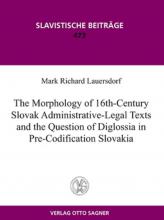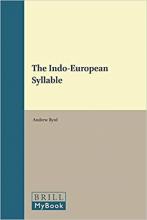The Question of 'Cultural Language' and Interdialectal Norm in 16th Century Slovakia: A Phonological Analysis of 16th Century Slovak Administrative-Legal Texts

There is not general agreement among scholars on the degree or type of standardization, or better, normalization, exhibited by Slovak texts before the 18th-19th century codifying efforts of Anton Bernolák, Ľudovít Štúr and their followers. Indeed, disagreement on this issue is greater the earlier the time period under consideration. The present study focuses on the 16th century and the degree and type of standardization/normalization exhibited in a corpus of 152 administrative-legal texts (judicial and municipal records, official correspondence, account books, etc.) from all four major Slovak dialect regions – Moravian, West, Central and East Slovak. The author examines the textual distribution of reflexes from nine diacritic phonological developments to determine whether the corpus provides phonological evidence for the existence of 16th century Slovak interdialectal norms and to establish the areal scope and linguistic basis of any attested interdialectal phonological normalization.

